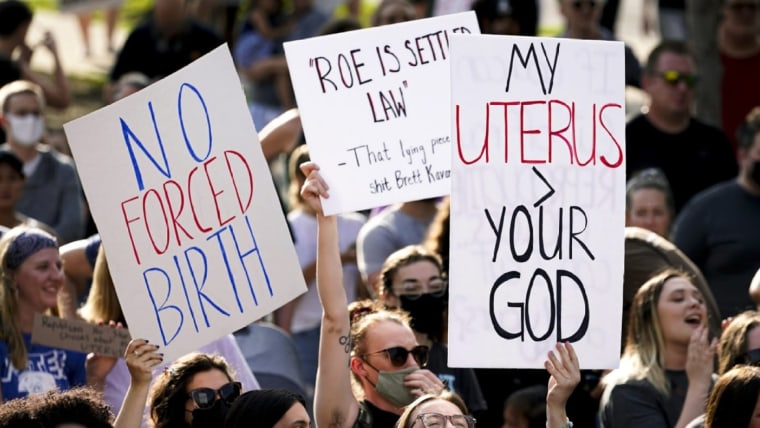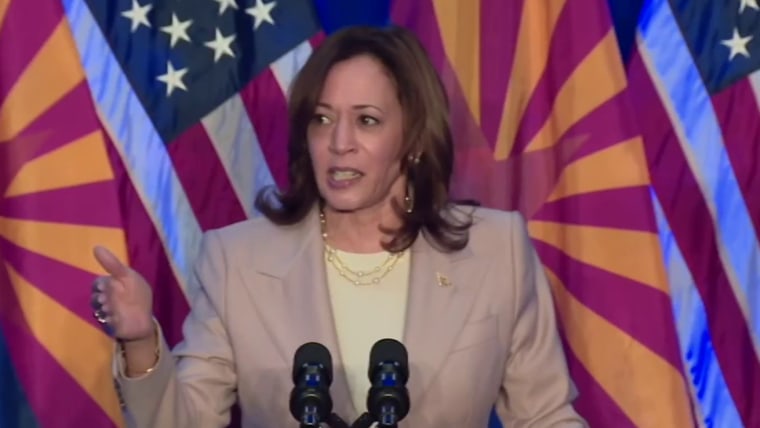Struggles over reproductive rights ratcheted up last week after the Arizona Supreme Court upheld a near-total ban first put in place in 1864. Vice President Kamala Harris wasted no time in visiting the state, a major battleground in 2024, to proclaim that former President Donald Trump wanted “to take America back to the 1800s.” But history suggests that when this ban goes into effect, the state’s residents will experience much more stringent restrictions than did Arizonans 160 years ago. As conservatives consider reviving other “zombie laws,” Arizona’s experience is a warning to the rest of the country.
The 1864 ban was part of a wave of laws criminalizing abortion introduced at the behest of the American Medical Association. Led by Harvard Medical School professor Horatio Storer, the AMA argued that life began at conception — and that without stricter abortion laws, married women would have sex for reasons other than procreation and make marriage no different from prostitution. Arizona was one of many states and territories that introduced such laws in the late 19th century.
The number of abortions performed across the country seems to have increased in the late 19th century after laws like Arizona’s passed.
On paper, Arizona’s law is sweeping, allowing for an abortion only when a patient’s life is at risk. In practice, in the 1860s, physicians still had real discretion about when to intervene. Though precise figures are hard to come by, maternal mortality rates in the United States at the time appear to have been astronomical. Any physician who wanted to claim a patient’s life was at risk would have had little trouble convincing anyone. The historian Leslie Reagan has shown that one of the most common justifications for life-saving abortions in the era was excessive vomiting. That could be life-threatening, to be sure, but physicians were left with real discretion about when, in these circumstances, a patient was at risk. And patients who wanted abortions for other reasons might have been able to convince a sympathetic physician to help.
Then there was the simple fact that identifying an early pregnancy was challenging. Before the late 19th century, physicians sometimes listened for fetal cardiac activity to identify a pregnancy — something that did not often yield a definitive result until the fourth month of pregnancy. By the end of the century, somewhat more reliable tests were available, but almost no doctors were willing to use them because they required examining a woman’s cervix, uterus or vagina, all of which were viewed as improper at the time. That meant that knowing early on when someone was pregnant was anything but easy. It was not any simpler to tell whether drugs marketed for “female troubles” acted to regulate menstrual periods, prevent conception, or terminate a pregnancy — or were simply snake oil remedies.

Unsurprisingly, then, laws like Arizona’s were not always strictly enforced. The number of abortions performed across the country seems to have increased in the late 19th century after tough laws like Arizona’s passed. Physicians — who were the ones behind the movement for new criminal laws — retained or even expanded their discretion in interpreting the law. Prosecutions were rare unless a patient died during an abortion.
Arizonans in 2024 live in a different world. By the 1930s, prosecutors opposed to abortion were no longer willing to buy that most abortions could be life-saving, arguing that cesarean sections and the availability of antibiotics had made pregnancy much safer. The modern anti-abortion movement has taken things a step further, arguing that there is no such thing as a life-saving abortion — and that when a patient’s life is at risk, that procedure is not an abortion but a maternal-fetal separation. Very few patients, if any, would qualify for a life-saving abortion in the eyes of a prosecutor who opposes abortion.
It is dangerous in 2024 to assume that zombie laws will not come back to life.
And today, physicians don’t have the kind of discretion their 19th-century counterparts did. Pregnancy tests are reliable within a short window of a missed period. And then there’s the stigma surrounding doctors who perform abortions. For decades, the anti-abortion movement has demonized what it calls “abortionists,” arguing that physicians are motivated by money and determined to exploit any exception, no matter how narrow, to perform abortions on demand. And since the Supreme Court reversed Roe in June 2022, physicians themselves have been cautious, refusing to invoke exceptions when guessing wrong could cost them their medical licenses and their freedom. In 1864, a life exception created a real opening for some patients. Today, such an exception will not likely make any difference.
The enforcement of Arizona’s ban offers a powerful lesson about the revival of zombie laws. Other states have old abortion laws on the books. Still others have never repealed laws banning same-sex marriage or intimacy, or sex outside of marriage.
Perhaps most powerfully, conservatives are looking to a federal law, the Comstock Act, which has been on the books since 1873, to create an abortion ban that voters would never choose to enact. The Comstock Act has been enforced in recent years in cases involving child pornography but has not applied in cases of abortion for decades. And the Comstock Act is an obscenity law, intended not to protect fetal life but to discourage illicit sex. That hasn’t stopped former Trump officials from reinventing the Comstock Act as a ban on receiving or mailing abortion-related items — and arguing that a Trump Department of Justice could start enforcing the law against abortion providers and drug companies, even in states that protect reproductive rights.

Given Trump’s attempts to defuse abortion as a political issue, it may be hard to believe that he would really bring back a zombie law that voters would despise. But Trump himself has not been willing to answer direct questions about whether his Justice Department would enforce the Comstock Act, even as his allies promise that he will wield the law as an abortion ban.
It is dangerous in 2024 to assume that zombie laws will not come back to life, as Arizona voters now know all too well. If some conservatives have their way, Arizona’s law will be just the beginning.
